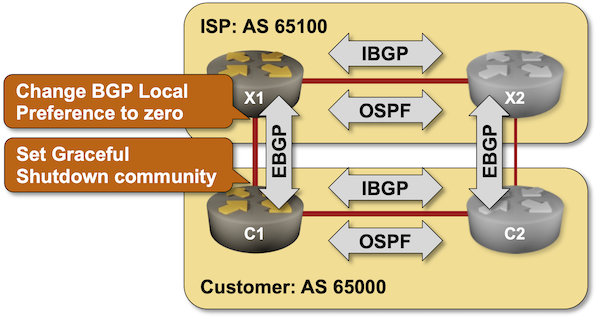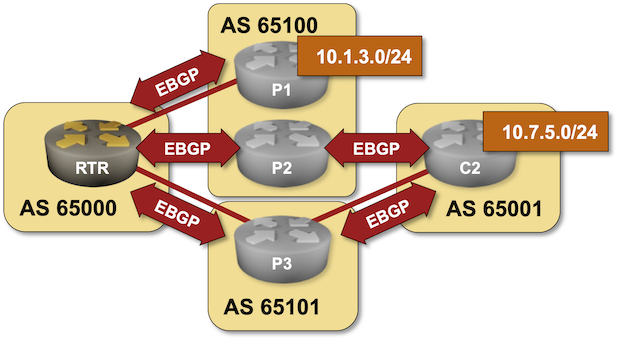Public Videos: Network Automation 101

You can access the Network Automation 101 videos without registration. Hope you’ll find them useful if you’re just starting your network automation journey.
Worth Reading: ChatGPT Does Not Summarize
I mostly gave up on LLMs being any help (apart from generating copious amounts of bullshit), but I still thought that generating summaries might be an interesting use case. I was wrong.
As Gerben Wierda explains in his recent “When ChatGPT summarises, it actually does nothing of the kind” blog post, you have to understand a text if you want to generate a useful summary, and that’s not what LLMs do. They can generate a shorter version of the text, which might not focus on the significant bits.
Worth Reading: ChatGPT Does Not Summarize
I mostly gave up on LLMs being any help (apart from generating copious amounts of bullshit), but I still thought that generating summaries might be an interesting use case. I was wrong.
As Gerben Wierda explains in his recent “When ChatGPT summarises, it actually does nothing of the kind” blog post, you have to understand a text if you want to generate a useful summary, and that’s not what LLMs do. They can generate a shorter version of the text, which might not focus on the significant bits.
BGP Labs: Graceful Shutdown
Using the typical default router configurations, it can take minutes between a failure of an inter-AS link and the convergence of BGP routes. You can fine-tune that behavior with BGP timers and BFD (and still get pwned by Graceful Restart). While you can’t influence link failures, you could drain the traffic from a link before starting maintenance operations on it, and it would be a shame not to do that considering there’s a standard way to do that – the GRACEFUL_SHUTDOWN BGP community defined in RFC 8326. That’s what you’ll practice in the next BGP lab exercise.

BGP Labs: Graceful Shutdown
Using the typical default router configurations, it can take minutes between a failure of an inter-AS link and the convergence of BGP routes. You can fine-tune that behavior with BGP timers and BFD (and still get pwned by Graceful Restart). While you can’t influence link failures, you could drain the traffic from a link before starting maintenance operations on it, and it would be a shame not to do that considering there’s a standard way to do that – the GRACEFUL_SHUTDOWN BGP community defined in RFC 8326. That’s what you’ll practice in the next BGP lab exercise.

Must Read: Make Two Trips
Tom Limoncelli wrote another must-read masterpiece: sometimes you’ll save time if you make two trips instead of one.
The same lesson applies to network design: cramming too many features into a single device will inevitably result in complex, hard-to-understand configurations and weird bugs. Sometimes, it’s cheaper to split the required functionality across multiple devices.
Must Read: Make Two Trips
Tom Limoncelli wrote another must-read masterpiece: sometimes you’ll save time if you make two trips instead of one.
The same lesson applies to network design: cramming too many features into a single device will inevitably result in complex, hard-to-understand configurations and weird bugs. Sometimes, it’s cheaper to split the required functionality across multiple devices.
BGP Route Reflectors Considered Harmful
The recent IBGP Full Mesh Between EVPN Leaf Switches blog post generated an interesting discussion on LinkedIn focused on whether we need route reflectors (in small fabrics) and whether they do more harm than good. Here are some of the highlights of that discussion, together with a running commentary.
BGP Route Reflectors Considered Harmful
The recent IBGP Full Mesh Between EVPN Leaf Switches blog post generated an interesting discussion on LinkedIn focused on whether we need route reflectors (in small fabrics) and whether they do more harm than good. Here are some of the highlights of that discussion, together with a running commentary.
Testing Device Configuration Templates
Many network automation solutions generate device configurations from a data model and deploy those configurations. Last week, we focused on “how do we know the device data model is correct?” This time, we’ll take a step further and ask ourselves, “how do we know the device configurations work as expected?”
There are four (increasingly complex) questions our tests should answer:
Testing Device Configuration Templates
Many network automation solutions generate device configurations from a data model and deploy those configurations. Last week, we focused on “how do we know the device data model is correct?” This time, we’ll take a step further and ask ourselves, “how do we know the device configurations work as expected?”
There are four (increasingly complex) questions our tests should answer:
Worth Reading: Using AWS Services via IPv6
AWS started charging for public IPv4 addresses a few months ago, supposedly to encourage users to move to IPv6. As it turns out, you need public IPv4 addresses (or a private link) to access many AWS services, clearly demonstrating that it’s just another way of fleecing the sheep Hotel California tax. I’m so glad I moved my videos to Cloudflare ;)
For more details, read AWS: Egress Traffic and Using AWS Services via IPv6 (rendered in beautiful, easy-to-read teletype font).
Worth Reading: Using AWS Services via IPv6
AWS started charging for public IPv4 addresses a few months ago, supposedly to encourage users to move to IPv6. As it turns out, you need public IPv4 addresses (or a private link) to access many AWS services, clearly demonstrating that it’s just another way of fleecing the sheep Hotel California tax. I’m so glad I moved my videos to Cloudflare ;)
For more details, read AWS: Egress Traffic and Using AWS Services via IPv6 (rendered in beautiful, easy-to-read teletype font).
EVPN Designs: IBGP Full Mesh Between Leaf Switches
In the previous blog post in the EVPN Designs series, we explored the simplest possible VXLAN-based fabric design: static ingress replication without any L2VPN control plane. This time, we’ll add the simplest possible EVPN control plane: a full mesh of IBGP sessions between the leaf switches.
EVPN Designs: IBGP Full Mesh Between Leaf Switches
In the previous blog post in the EVPN Designs series, we explored the simplest possible VXLAN-based fabric design: static ingress replication without any L2VPN control plane. This time, we’ll add the simplest possible EVPN control plane: a full mesh of IBGP sessions between the leaf switches.
EVPN Rerouting After LAG Member Failures
In the previous two blog posts (Dealing with LAG Member Failures, LAG Member Failures in VXLAN Fabrics) we discovered that it’s almost trivial to deal with a LAG member failure in an MLAG cluster if we have a peer link between MLAG members. What about the holy grail of EVPN pundits: ESI-based MLAG with no peer link between MLAG members?
EVPN Rerouting After LAG Member Failures
In the previous two blog posts (Dealing with LAG Member Failures, LAG Member Failures in VXLAN Fabrics) we discovered that it’s almost trivial to deal with a LAG member failure in an MLAG cluster if we have a peer link between MLAG members. What about the holy grail of EVPN pundits: ESI-based MLAG with no peer link between MLAG members?
BGP Labs: Load Balancing across EBGP Paths
Let’s open another juicy can of BGP worms: load balancing. In the first lab exercise, you’ll configure equal-cost load balancing across EBGP paths and tweak the “What is equal cost?” algorithm to consider just the AS path length, not the contents of the AS path.

BGP Labs: Load Balancing across EBGP Paths
Let’s open another juicy can of BGP worms: load balancing. In the first lab exercise, you’ll configure equal-cost load balancing across EBGP paths and tweak the “What is equal cost?” algorithm to consider just the AS path length, not the contents of the AS path.

Testing Network Automation Data Transformation
Every complex enough network automation solution has to introduce a high-level (user-manageable) data model that is eventually transformed into a low-level (device) data model.

High-level overview of the process
The transformation code (business logic) is one of the most complex pieces of a network automation solution, and there’s only one way to ensure it works properly: you test the heck out of it ;) Let me show you how we solved that challenge in netlab.